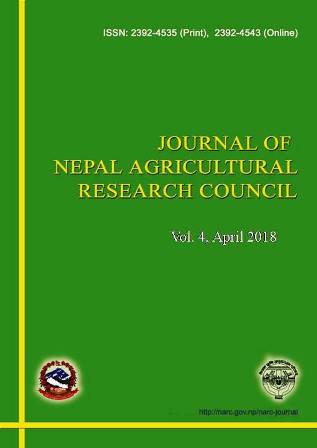Soil Baiting, Rapid PCR Assay and Quantitative Real Time PCR to Diagnose Late Blight of Potato in Quarantine Programs
DOI:
https://doi.org/10.3126/jnarc.v4i1.19687Keywords:
Detection, Late blight, PCR, Potato, P. infestans, Real time PCR, SoilAbstract
Phytophthora infestans (mont) de Bary is a pathogen of great concern across the globe, and accurate detection is an important component in responding to the outbreaks of potential disease. Although the molecular diagnostic protocol used in regulatory programs has been evaluated but till date methods implying direct comparison has rarely used. In this study, a known area soil samples from potato fields where light blight appear every year (both A1 and A2 mating type) was assayed by soil bait method, PCR assay detection and quantification of the inoculums. Suspected disease symptoms appeared on bait tubers were further confirmed by rapid PCR, inoculums were quantified through Real Time PCR, which confirms presence of P. infestans. These diagnostic methods can be highly correlated with one another. Potato tuber baiting increased the sensitivity of the assay compared with direct extraction of DNA from tuber and soil samples. Our study determines diagnostic sensitivity and specificity of the assays to determine the performance of each method. Overall, molecular techniques based on different types of PCR amplification and Real-time PCR can lead to high throughput, faster and more accurate detection method which can be used in quarantine programmes in potato industry and diagnostic laboratory.




